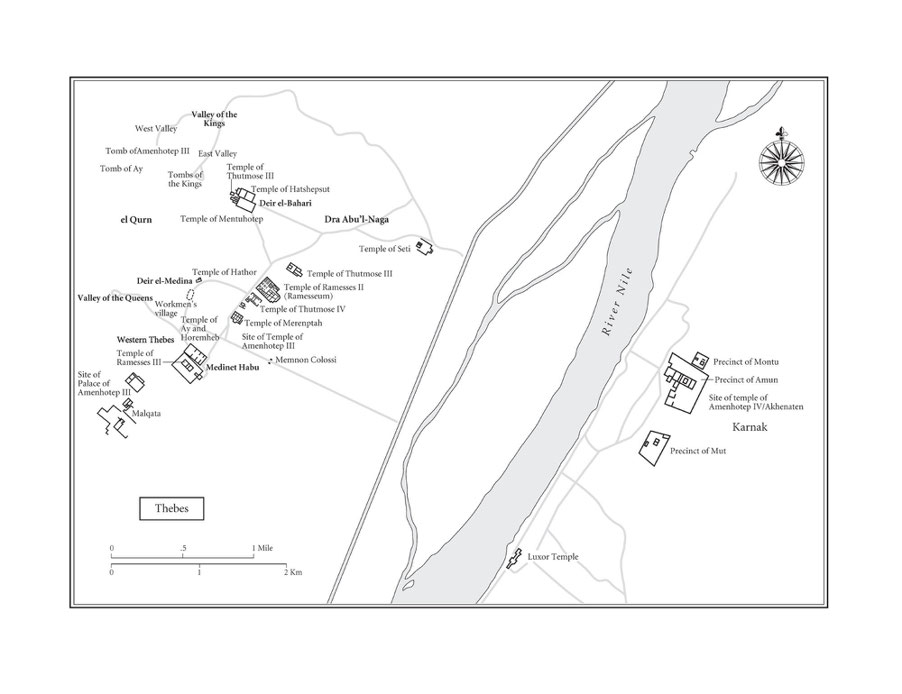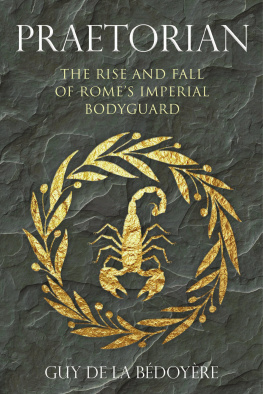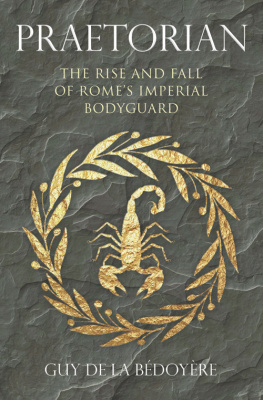Guy de la Bédoyère - Pharaohs of the Sun: The Rise and Fall of Tutankhamuns Dynasty
Here you can read online Guy de la Bédoyère - Pharaohs of the Sun: The Rise and Fall of Tutankhamuns Dynasty full text of the book (entire story) in english for free. Download pdf and epub, get meaning, cover and reviews about this ebook. year: 2023, genre: Religion. Description of the work, (preface) as well as reviews are available. Best literature library LitArk.com created for fans of good reading and offers a wide selection of genres:
Romance novel
Science fiction
Adventure
Detective
Science
History
Home and family
Prose
Art
Politics
Computer
Non-fiction
Religion
Business
Children
Humor
Choose a favorite category and find really read worthwhile books. Enjoy immersion in the world of imagination, feel the emotions of the characters or learn something new for yourself, make an fascinating discovery.
- Book:Pharaohs of the Sun: The Rise and Fall of Tutankhamuns Dynasty
- Author:
- Genre:
- Year:2023
- Rating:4 / 5
- Favourites:Add to favourites
- Your mark:
- 80
- 1
- 2
- 3
- 4
- 5
Pharaohs of the Sun: The Rise and Fall of Tutankhamuns Dynasty: summary, description and annotation
We offer to read an annotation, description, summary or preface (depends on what the author of the book "Pharaohs of the Sun: The Rise and Fall of Tutankhamuns Dynasty" wrote himself). If you haven't found the necessary information about the book — write in the comments, we will try to find it.
Guy de la Bédoyère: author's other books
Who wrote Pharaohs of the Sun: The Rise and Fall of Tutankhamuns Dynasty? Find out the surname, the name of the author of the book and a list of all author's works by series.
Pharaohs of the Sun: The Rise and Fall of Tutankhamuns Dynasty — read online for free the complete book (whole text) full work
Below is the text of the book, divided by pages. System saving the place of the last page read, allows you to conveniently read the book "Pharaohs of the Sun: The Rise and Fall of Tutankhamuns Dynasty" online for free, without having to search again every time where you left off. Put a bookmark, and you can go to the page where you finished reading at any time.
Font size:
Interval:
Bookmark:

Pharaohs of the Sun
The Rise and Fall of Tutankhamuns Dynasty
Guy de la Bdoyre

This book is dedicated to my grandchildren Nell, Willow, Rufus, James, and Oliver
I will speak to you, all people:
I have been rewarded with gold seven times before the entire land,
And also with male and female slaves
I have been endowed with many fields
The name of a brave man is in what he has done.
I conveyed the Dual King, Thutmose I,
As he sailed south to Khent-hen-nefer
To crush rebellion throughout the lands
And to drive off intrusion from the desert regions
I showed valour in his presence at the cataract.
From the tomb biography of Ahmes-Ibana, soldier and naval commander
MAPS AND PLANS






In 1972, like thousands of others at the time, I queued for several hours to see the Tutankhamun Exhibition at the British Museum in London. The experience of seeing the displays was overwhelming and unforgettable, even life changing. Tutankhamun was one of the last, and most obscure, kings of Egypts 18th Dynasty (c. 15501295 bc). In November 1922, when Tutankhamuns tomb was discovered, he became a household name and has remained so ever since. Many of his predecessors were far more illustrious or notorious than him, including Hatshepsut and Akhenaten. Some, like Thutmose III, were the most powerful kings of their era.
Another half-century has passed since 1972 and I still have some of the books and souvenirs acquired at the time, the first part of a still-growing personal Egyptology library. Countless weekends were spent in the Egyptian galleries at the British Museum. At Durham University I studied Egyptology as part of my first degree.
Modern tourism in Egypt was well established by the 1970s but nothing like the colossal industry it became before fears of instability in the Middle East crushed it almost out of existence. In 1983 I made my first trip to the Nile Valley. It was still possible to wander easily among the monuments on the West and East Banks at Luxor (Thebes) without seeing many other people. I was filled with wonder, most by the arduous walk in the baking late summer heat from the Temple of Hatshepsut and up over the hills across to the Valley of the Kings. Several other visits to Egypt followed. It was also my good fortune to visit major exhibitions of material from Tutankhamuns tomb and the Amarna era in Los Angeles and Denver. For nine years I worked as a teacher and took trips to Berlin where one of the annual pleasures was introducing students to Akhenaten through the magnificent Amarna collection at the Egyptian Museum there. Some of those students said in later years that seeing the bust of Nefertiti had been the most memorable experience of their historical studies.
There can be no other ancient civilization that is so instantly recognizable to modern eyes as that of the Egyptians. Stories about Egypt and antiquities trickled into Europe for centuries, especially once Octavian (afterwards Augustus) seized Egypt in 30 bc for the Roman Empire. The popes in Rome recovered buried statues and obelisks brought there by the Roman emperors.
Awareness of Egypts exotic past and landscape spread gradually among the cognoscenti of Europe in the seventeenth and eighteenth centuries, but it was Napoleons Expedition to Egypt that had a truly dramatic impact. By publishing magnificent illustrations of the monuments, many since damaged or destroyed, the French explorers caused a worldwide sensation. In 1799 they found the Rosetta Stone which would change everything by revealing a path to deciphering hieroglyphs. Travelling to the Nile Valley soon became a more common pastime, at first only for the privileged rich and daring, reviving a tradition that had existed as far back as the fifth century bc when the Greek historian Herodotus visited an ancient Egypt already well into decline.
As Egypt opened up in the 1800s, explorers and excavators sailed up the Nile. They were fascinated by the monuments, strange gods and stranger customs, the gold and the cryptic language, just as visiting Roman senators had been in their time. Once the hieroglyphs had begun to give up their secrets, Egypts history began to emerge back into the light along with the discovery and clearance of ever more monuments. European museums were the first to start packing their galleries with astonishing finds and works of art. Many major museums in the world have outstanding collections of 18th Dynasty relics, but the most important of all is in Cairo. No one who visits any one of these or is lucky enough to explore Egypt can fail to be staggered by the vastness of the sculpture, the beauty of the hieroglyphs and the sheer mystery of this remarkable and unique civilization.
The enthusiastic amassing of museum collections in the nineteenth century and later could be just as easily seen as the despoliation of ancient Egypt. Many archaeologically valuable sites and locations were destroyed in the search for exciting pieces. Some places were excavated with care, but the standard of recording varied wildly. A great deal of ransacking, especially of tombs, went on in the hunt for valuable artefacts to sell to the antiquities market. It cut both ways. The results included sensational discoveries, like the first cache of royal mummies found in 1881, and drawings or paintings made of reliefs and carvings that no longer exist, at least in legible form.
Since the ancient Egyptians spent a great deal of time despoiling one another and anyone else within their reach it is hard to be too judgemental. At least nowadays the buildings and artefacts housed in museums are safer than they have ever been. The greatest threat a pharaohs burial and monuments faced was from his successors rather than nineteenth-century collectors, and the same applied to almost any private burial or possessions.
In the meantime, the work inspired ever more assiduous searches, the sand and rock being swept aside in the relentless hunt for the literal crock of gold. The discovery of Tutankhamuns tomb is unlikely ever to be matched, let alone exceeded. In recent decades work has been more concerned with long-term projects, such as restoring Hatshepsuts memorial-mortuary temple, mapping and recording Akhenatens city at Tell el-Amarna, together with workers villages and cemeteries, and the reconstruction of his reliefs from the blocks used as filling in later pylons at Karnak. The new National Museum of Egyptian Civilization in Cairo is the latest great initiative. In April 2021 it was the destination of the Pharaohs Golden Parade when the royal mummies, including some of the most important 18th Dynasty rulers, were moved there and watched by the world.
Next pageFont size:
Interval:
Bookmark:
Similar books «Pharaohs of the Sun: The Rise and Fall of Tutankhamuns Dynasty»
Look at similar books to Pharaohs of the Sun: The Rise and Fall of Tutankhamuns Dynasty. We have selected literature similar in name and meaning in the hope of providing readers with more options to find new, interesting, not yet read works.
Discussion, reviews of the book Pharaohs of the Sun: The Rise and Fall of Tutankhamuns Dynasty and just readers' own opinions. Leave your comments, write what you think about the work, its meaning or the main characters. Specify what exactly you liked and what you didn't like, and why you think so.















